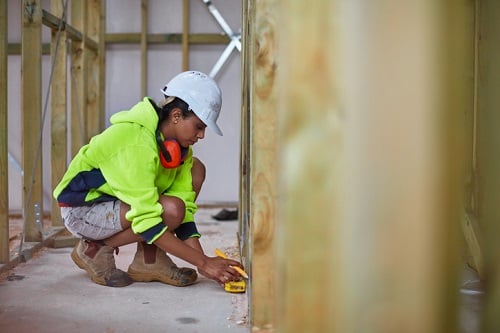Fewer builders makes it harder to meet demand

The National Association of Realtors released their April 2019 report, which projects that housing starts will increase from 1.362 million in 2018 to 2 million by 2028, based on data surrounding job growth in building construction and the impact of construction jobs on housing starts.
Compared to the level one year ago, there was job growth in 47 states, and the job growth in Washington, Arizona, Colorado, Texas, Florida, Georgia, and New York outpaced the national average.
The net payroll increase of 2.5 million payroll jobs in almost all industries translates to an annual demand of 1.25 million housing units.
The question then becomes whether or not construction is on track to meet that demand.
On the face of it, yes – construction jobs rose by 239,000, while real estate, rental, and leasing jobs increased by 28,000. But, the report finds, residential construction employment in particular is still below its pre-recession peak.
“As of March 2019, there were 550,000 fewer people employed in residential building construction and specialty trades (2.9 million) compared to the peak levels during the housing market boom (3.45 million) based on Bureau of Labor Statistics nonfarm employment data. Lack of construction labor has constrained the building of new homes, according to many home builders,” the report said.
Commercial construction, on the other hand, is booming. There were nearly 30,000 more people employed in the non-residential building construction and specialty trades than there were during the peak of the pre-recession housing boom.
From 2016 to 2018, jobs in building construction and specialty trade rose five percent on average and there was one housing start per five jobs created, and the housing starts are based on these trends. That means that in spite of there being demand for 1.25 million housing units, there is only an increase of 56,000 housing starts projected in 2019, and an increase of 57,000 housing starts in 2020.
“Housing supply will continue to remain tight unless constructions job growth accelerates to more than the current annual pace of four percent,” the report said. “Addressing the current housing supply constraints will require collaboration between industries and trade-schools in attracting workers, including women, in construction. The relatively higher wage of construction workers compared to workers in manufacturing, transportation, and warehousing, education and health, retail trade, hospitality, and private industries in general, should attract workers in construction compared to these other industries, if workers are trained in these specialty skilled jobs.”
If these construction jobs don’t accelerate to adequately address current housing constraints and demands, however, the situation could provide a boon to modular and manufactured housing, which requires less construction labor.



